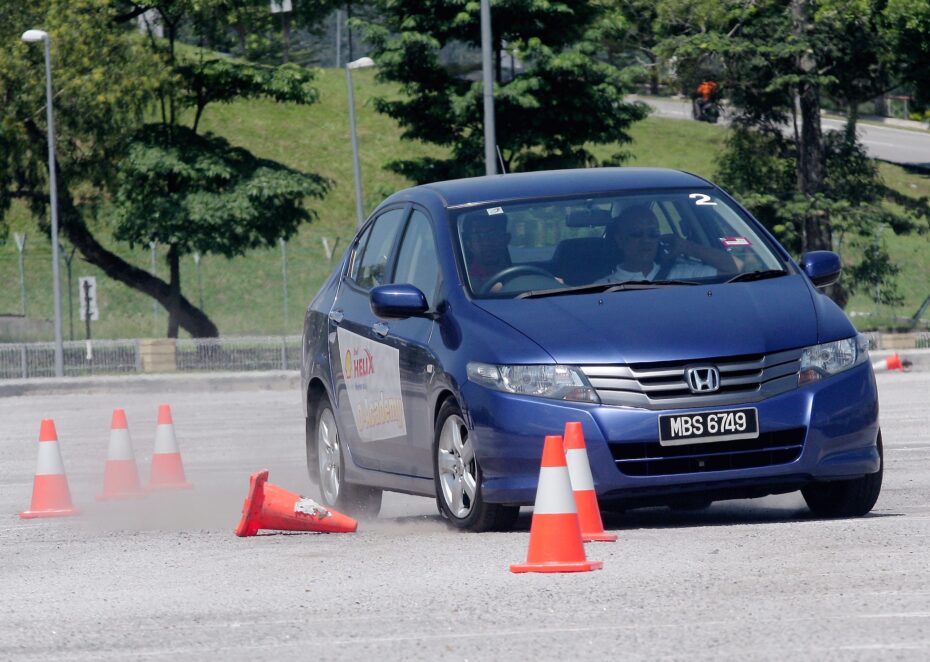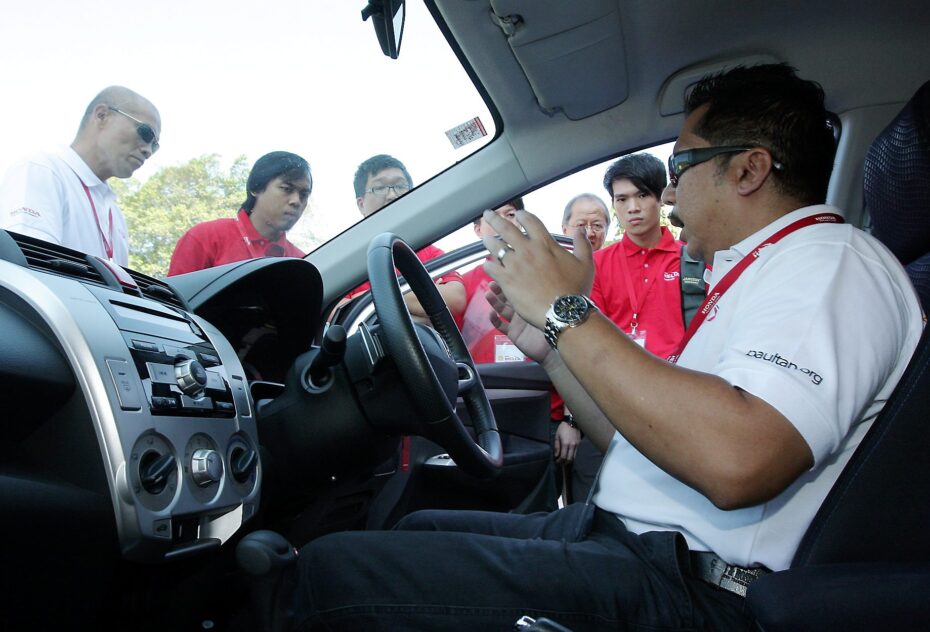How many times have you seen a tiny compact car barreling down the road past you at full speed, with some young punk behind the wheel who’s most likely blasting Pumped Up Kicks on the stereo?
Probably one too many.
Compact cars are all the rage among young people these days, and while they can be fun, stylish, fuel-efficient and awesome for parking, you probably wouldn’t want to be caught dead in one (like, literally) during an accident.
That’s exactly why Shell decided to organise the Shell Helix D-Academy Defensive Driving Course last weekend, a one-day programme for 30 lucky participants on how to better handle compact cars with lower displacement engines (that’s your engine’s “cc” lah…) in difficult conditions.
In other words, the participants got to try out some sick moves behind the wheels of a few sweet, compact rides from Honda.

They got to slam the brakes on a car running at 60km/h, drift through an oil slick to learn how to correct an oversteer, and drive through a slalom course as fast as they can while using the proper steering techniques.
A course like that would normally cost around RM1,000 per person, but Shell organised it exclusively for the winners of a Facebook competition held in conjunction with the launch of their new Shell Helix HX7 E engine oil – also formulated specially for compact cars.
R.AGE was lucky enough to score an invite to take part in the course.
Sitting right
We all love to sit back and roll out in our rides like that super awesome rapper in the Friday music video.
But, as with everything else about that video, song and Rebecca Black, it’s wrong.
If you want to be a good driver that’s ready for anything the road throws at you, be it a crate falling off the back of a truck or the horror of actually hearing Friday on the radio, make sure you’re sitting at the right distance from the wheel.
Defensive and advanced driving instructor Ching Eu Earn explains why. “Seventy percent of safe driving is in your seating position. It’s very, very important.
“You can’t control your car in an emergency situation if the wheel is too near or too far from you.”

During the oversteering exercise, where the instructors made us drive through an oil slick and pulled the hand brake to initiate an oversteer (which is basically when the rear of your car spins out of control), it became immediately obvious how important our seat position was.
If you’re too far from the wheel, the G-forces of a violent turn will throw you off and make it almost impossible to get a proper grip on the wheel to “counter-steer” or to put your foot back on the accelerator, which is what you’re supposed to do.
If you’re too close, you won’t be able to manoeuvre the wheel quick enough into the counter-steer position either.
To know if you’re seated at the optimum distance from the wheel, check if your wrists can touch the wheel while leaning back on the seat, and you’ll already be 70% safer than before.
Steering the right way
We all know about the usual “10 and two o’clock” hand positions on the steering wheel, but how you manoeuvre it is even more important.
What we gathered on the course about steering techniques, is that you should NEVER use Mr Miyagi’s “wax-on/wax-off” method (aka the one-handed window cleaning motion from the Karate Kid movies).
Instead, use the much more sophisticated-sounding “roti canai” method, which the instructors referred to as the “cross-steer”.
Both hands remain on the wheel unless you make a full rotation, in which case you let go of the hand on the same side as the turn, cross the other hand over, and immediately grip it back with both hands.
As we negotiated the slalom course, we found that you can avoid most obstacles without having to turn the wheel full rotation, so you can keep both hands at 10 and two most of the time.
The “push and pull” method they teach in driving school is fine, but in an emergency situation, you might find that you’ve fit the curb before you even reach your second pull.
Staying in control
Oversteering and understeering is one of the most common ways for you to lose control on the road.
An example of an understeer is when your car negotiates a bend and the road starts to bend downhill. As your car accelerates down the bend, you’ll find that your car will slowly veer away from your initial steering angle.
All you have to do in that situation is tap your brakes (and for the love of God, don’t slam it). The reduced acceleration should realign your car’s trajectory and help you gain control of the wheel again.
An oversteer is far trickier. That’s what drift racers do, but of course, they do it intentionally, and they’re still in control of their cars – most of the time.
Anyway, if you see a sudden obstacle on the road and you need to evade it, chances are you might steer too wide of the obstacle, and too suddenly. That causes the rear end of your car to swerve out of control, and puts you in a lot of trouble.
What you need to do to regain control of your car is counter-steer, which is basically throwing your wheel the opposite direction, and accelerate out of the swerve. You could hit the brakes too, but it’ll probably be safer if you kept moving after you regain control.
* To find out how our day at the Shell Helix D-Academy Defensive Driving Course went, log on to twitter.com and search the #DefensiveDriving hashtag.

Leave a reply